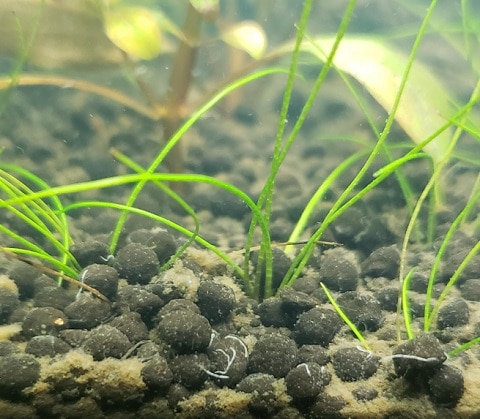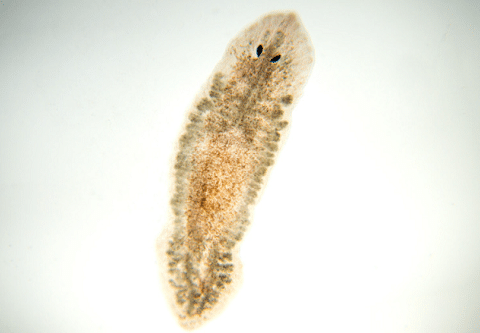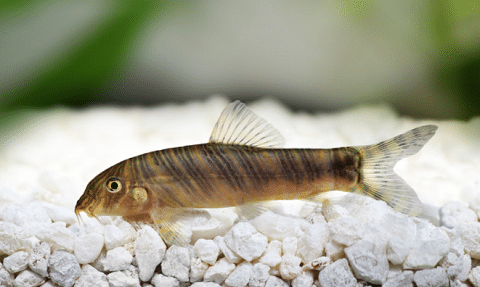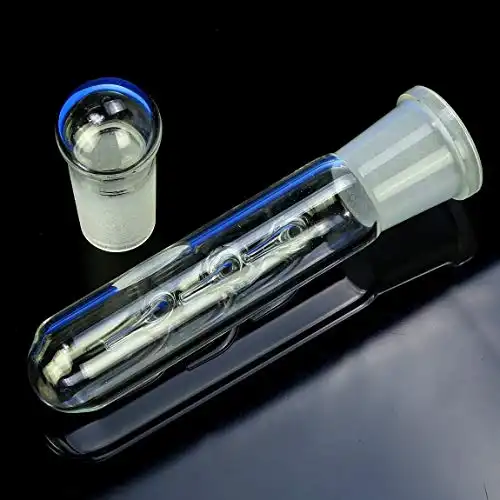Thank you for visiting! By the way… any links on this page that lead to products on Amazon and other stores/partners are affiliate links Aquarium Store Depot earns a commission if you make a purchase.
Having a beautiful fish tank that is filled with aquatic life is a common goal of most aquarists, but sometimes the types of creatures that pop up aren’t so welcome. This can leave you scratching your head and wondering just how they got into your tank and how to get rid of them!
In this article, I’ll be teaching you about worms in fish tanks, the different types of worms found in home aquariums, and just what to do if you find them in your tank.
4 Types of Aquarium Worms
There are many types of pests that can turn up in aquariums and worms are a common culprit. In this article, I’ll be introducing 4 common types of worms found in fish tanks and ponds.
For each type, I will provide you with some important information about:
- Identifying the worm type
- Where they occur in the aquarium
- What causes them to spread and multiply
- How to treat them
So let’s get started!
1. Detritus

Detritus worms are common but harmless segmented worms. Many aquarists would rather not have any worms in their tanks, but detritus worms are actually a great member of your tank’s clean-up crew. These tiny annelid worms work hard to break down waste which helps keep the tank clean and the water quality high.
Detritus worms can reproduce rapidly in poorly maintained aquariums with too much waste and uneaten fish food.
Appearance
Detritus worms are segmented (annelid) worms, which puts them in the same family as the regular earthworm.
They are usually tiny white worms, but there are a bunch of different species, and some of the larger types can grow to an inch in length.
Where They Occur
Detritus worms usually live in the substrate, but they can also be found hiding in other places like your aquarium filter media. When the population of detritus worms in an aquarium explodes, they can be seen all over the place, even at the surface of the water.
Causes
Detritus worms find their way into aquariums with new fish and plants, or in translocated gravel, filter media, or water. They are present in many fish tanks and really don’t do any harm.
The detritus worm population increases when your water quality gets really bad and there is plenty of food for them in the form of leftover fish foods and waste. To prevent a detritus worms population explosion, make sure you maintain good water quality and dissolved oxygen levels.
Treatment Options
The best way to get rid of detritus worms is to give your tank a thorough cleaning and vacuum the gravel. To prevent detritus worms from coming back, keep up with regular aquarium maintenance and avoid overfeeding and overstocking your tank.
Chemical treatments are unnecessary for controlling detritus worms.
2. Planaria

Planaria worms are another common aquarium pest. These worms occur in both fresh and saltwater and can be quite a headache for fish and shrimp keepers.
These creatures are a little more sinister than the detritus worms because they are actually predators. These worms eat other small animals and they have been known to eat baby shrimps, as well as recently molted or weakened adult shrimps.
Appearance
Planaria worms are flatworms of the turbellaria family. These flattened worms have a triangular head shape and two visible eyes, which makes them pretty easy to identify.
They come in a variety of colors including white, red, and brown. They are usually seen crawling around because they are unable to swim.
Planaria worms look similar to the harmless rhabdocoela worms which are also a type of flatworm. Rhabdocoela worms are much smaller, however, and feed on bacteria and algae.
Where They Occur
Planaria worms are usually found in or on the substrate, or on the aquarium glass. These flatworms are unable to swim, so you won’t find them in the water column.
Causes
Planaria worms get into aquariums from water, materials, plants, and animals brought over from other infected aquariums and water sources. Quarantining new fish and sterilizing new plants before introducing them to your tank is always a good idea.
Treatment Options
The best way to get rid of, or at least manage the population of planaria worms is to use either traps or poisons. Some fish will also feed on the planaria in your aquarium.
3. Anchor

Anchor worms, or Lernaea, are common parasites that attach to aquarium fish. These unwelcome creatures are large enough to be seen with the naked eye.
Appearance
Anchor worms are visible as string-like structures that trail from the bodies of freshwater fish.
Their name is a little confusing since these creatures are actually crustaceans, and the worm-like part that is visible is, in fact, the female reproductive structure. They also have an anchor-like structure beneath the fish’s skin that keeps them locked in place.
Where They Occur
Anchor worms attach themselves to the skin of freshwater fish. They mostly affect cyprinid fish like goldfish and koi, but there are several different types of anchor worms and many different fish species can be affected.
Causes
Anchor worms find their way into aquariums when infected fish are introduced. The best way to avoid this is to quarantine your livestock before introduction to your fish tank. Anchor worms can also be introduced on live plants or in any water transferred to your tank.
Treatment Options
You can get rid of anchor worms with a chemical treatment, and by manually removing them from your fish.
While manually removing them with tweezers can be very effective, it is also risky and stressful for your fish. The wounds this can cause can be more harmful than the parasites themselves, especially in smaller, more sensitive fish.
Chemical treatments for anchor worms include:
- Potassium permanganate
- Hikari Cyropro
- Dimilin
- Salt
You can learn more about them and other parasites in my fish diseases post.
4. Camallanus

Camallanus worms (picture source) are another dreaded aquarium pest. These parasites can be common in livebearers but also affect many different fish species. This infection causes bloating and wasting disease, which can eventually kill your fish.
Appearance
Camallanus worms can go undetected in small numbers, but when you do spot them, it can be pretty alarming. These fish parasites are visible as thin red worms that protrude from the fish’s anus. They have the ability to retreat back into the host fish’s body, so they are not always visible.
Where They Occur
Camallanus worms are internal parasites, which means they live inside your fish.
Causes
Camallanus worms get into fish tanks when bringing in new livestock and fish from other infected sources like pet stores or friends’ tanks.
Treatment Options
Camallanus worms can be tough to get rid of! If you notice any infected fish, take action right away.
The best treatment is to use medications like Fenbendazole. Fortunately, these antihelminthic medicines are safe for inverts like shrimps and snails in the correct doses.
Levamisole is another popular treatment for these parasites.
Removal & Treatment
Worm removal begins with identifying the type of worm you have and identifying the cause. Once you have that worked out, you can put together an action plan!
We have a video below from our YouTube channel that will guide you. We go over more in detail in this blog. If you like our content, be sure to subscribe. We post every week.
Let’s take a look at how to control worm populations in your aquarium.
How To Avoid Introducing Them
Prevention is always better than cure, just as the old saying goes! Even if you already have a worm problem, preventing further introductions in the future is definitely a good idea. Let’s take a look at how to keep unwanted critters out of your tank:
- Buy your fish from a trusted source
- Grow tissue culture plants that are pest-free. (Buceplant stocks a great range of these). Avoid adding wild pond plants to your tank
- Add as little water from outside sources as possible. Natural waterways and other aquariums are especially risky sources
- Quarantine your fish before adding them to a community tank
- Dip your plants to kill any hitch-hiking pests
Maintaining Good Water Quality
Water quality can be both the cause of worm infestations, as well a factor that makes a bad situation even worse. The main causes of poor water quality are:
- Leftover food from overfeeding your fish. Leftover fish food increases nutrient levels in the water and can cause algae growth too
- Excess waste in the aquarium system from too many fish or a lack of maintenance
- Plant waste in the form of rotting leaves will also reduce water quality
- Poor filtration
Poor water quality creates a great environment for worms to multiply, and also weakens your fish’s immune system, making them more susceptible to attack by parasites.
To stay on top of the water quality in your tank, make sure you run a good quality filter, perform regular partial water changes, and test your water parameters regularly.
Using A Gravel Vacuum
Giving your aquarium a thorough cleaning every few weeks is a very important part of aquarium maintenance. Your gravel vacuum is one of the most useful tools you have for keeping the water quality in your tank high and preventing pest problems.
By vacuuming the substrate, you not only remove the worms and larvae, but also the leftover food and waste that feeds them.
Using A Trap
Trapping can be a very effective means of controlling the population of stubborn worms like planaria. You aren’t likely to remove all of them this way, but it is a great option for aquarists who prefer not to use chemical treatments.
A worm trap is a device that is baited with a food source like shrimp meat or frozen bloodworms. The planaria worms then enter the trap, allowing you to remove them easily.
Avoid leaving large amounts of bait in your tank for extended periods because this can cause dangerous ammonia spikes and reduce water quality.
Introducing Predatory Fish

In the case of non-parasitic worms like planaria and detritus worms, bottom feeders like loaches and other predatory fish can definitely be helpful. These worms will be seen as a tasty snack, and even if the fish can’t eradicate them completely, they will still help to keep the population under control.
Unfortunately, when it comes to parasites like anchor worms and camallanus worms, your fish are the victims and will not be able to help themselves.
Chemical Treatment
Sometimes, using medications and chemical treatments is the only option, even though many aquarists would prefer not to.
Dangerous parasites like anchor worms and camallanus worms should be eradicated as quickly and efficiently as possible. There are many products available, and if you’re uncertain about treating your own fish, reaching out to a veterinarian is always a safer bet.
Here’s a short list of commonly used chemical treatments that are available for aquarium water and fish treatment.
- Fenbendazole
An aquarium safe Fenbendazole treatment. Works against Flukes, Tapeworms, Nematodes, Planaria, Camallanus and more!
Fenbendazole is an active canine dewormer ingredient that is very effective for wiping out planarians in aquariums.
- Levamisole
Levamisole is an antihelminthic medication that can be very effective in the control of nematodes like camallanus worms. Unfortunately, this medication can be dangerous to shrimp and some fish such as loaches if overdosed.
- Dimilin
Dimilin x is a very useful product for controlling infestations of anchor worms. This is a very powerful treatment, however, so great care is necessary when calculating dosages.
FAQs
Are they bad in a fish tank?
Not all worms in fish tanks are bad. Some, like the detritus worms, are quite harmless. If you find any worms in your fish tank, make sure to identify them as accurately as possible to decide on the best treatment plan.
Are they harmful to humans?
No, fish tank worms are not dangerous to humans. There are, however, some (rare) conditions that humans can get from aquariums, so it’s a good idea to wash your hands after tank maintenance, and avoid swallowing aquarium water.
Where do they come from?
Fish tank worms find their way into our aquariums with animals, objects, or water from other aquariums or natural water sources. They tend to come in with plants, fish, water, gravel, and aquarium filter media.
Are planaria harmful to fish?
Planaria are usually not harmful to healthy fish. They can attack sick or injured fish, however. Planaria worms are harmful to shrimp and snails, so it is best to get rid of these pests as soon as possible.
Final Thoughts
If you’re dealing with an aquarium worm problem, rest assured, you’re not alone. Spotting a worm in your tank can be pretty alarming, but there’s no need to panic. Simply start by identifying the creature, and then be sure to follow the necessary steps or consult a veterinarian if necessary.
Have you had any aquarium worm issues lately? Let me know how you solved the problem below!
- About the Author
- Latest Posts
I’m thrilled that you found Aquarium Store Depot! Here you’ll find information on fish, aquariums, and all things aquatics related. I’m a hobbyist (being doing this since I was 11) and here to help other hobbyists thrive with their aquariums! I adhere to a high quality Editorial Process and Review products with real life field usage and practical analysis.








Rhabdocoela are really common in my tank.
will algegone eliminate worms in the aquarium
I’m not familiar with that product. I would check with the manufacturer
I’ve made a outdoor habitat for pacific chorus frogs. In the detritus I get tiny ( about an inch) bright red worms. They attach to the tadpoles and kill them.
The habitat is fiberglass and clean before the frogs lay their eggs. Where might the worms be coming from? I control them manually.
Thanks,
Fred
Hi Fred. If they are outdoors they can really come from anywhere. It’s likely from any aquatic plants you have. I’m not sure what they are. They might be Capillaria worms – which may require treatment. Try getting a video of them and post them online.